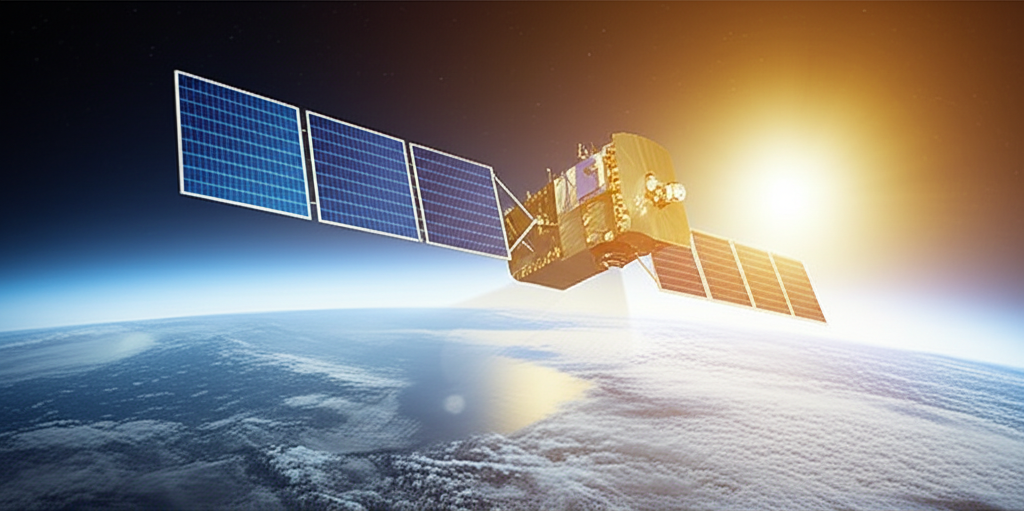Space-Based Solar Power: A New Frontier for Europe’s Energy Future?
Could orbiting panels provide a significant portion of the continent’s power by mid-century?
The concept of harvesting solar energy from orbit, once confined to science fiction, is gaining renewed attention as a potential solution to Europe’s growing energy demands and the inherent challenges of terrestrial renewable sources. A recent study suggests that a network of solar panels in space could dramatically reshape the continent’s energy landscape by 2050, potentially supplying a substantial portion of its renewable energy needs.
Harnessing the Sun’s Uninterrupted Power
Researchers have explored the possibility of deploying large-scale solar arrays in geostationary orbit, where they would receive continuous sunlight, unaffected by nightfall, cloud cover, or weather patterns that plague ground-based solar farms. This constant energy stream could then be transmitted wirelessly to receiving stations on Earth, providing a reliable and consistent power supply.
According to a study that utilized a detailed computer model of Europe’s future power grid, such a system could significantly reduce the reliance on traditional, land-based renewable energy sources. The findings indicate that space-based solar panels could meet up to 80% of Europe’s renewable energy requirements by 2050. This ambitious projection is attributed to the ability of orbiting arrays to overcome the intermittency issues that currently necessitate substantial battery storage for solar and wind power on Earth.
Economic and Grid Management Advantages
Beyond simply increasing renewable energy capacity, the study posits that a robust space-based solar power infrastructure could offer considerable economic benefits. The research suggests that the implementation of such a system could lead to a reduction in the overall cost of Europe’s power system by as much as 15%. This cost saving is partly attributed to a projected decrease in the need for extensive battery storage. The study estimates that battery usage could be cut by more than two-thirds, a significant factor given the current expense and resource demands associated with large-scale battery installations.
The ability to provide a steady, predictable energy output from space could also alleviate considerable pressure on existing power grids. Managing the fluctuating supply from variable renewable sources like wind and ground-based solar requires sophisticated grid management and often results in costly infrastructure upgrades. A consistent baseload of renewable power from orbit could simplify grid operations and enhance overall stability.
Technical Hurdles and Future Considerations
While the potential benefits are significant, the realization of space-based solar power faces substantial technical and economic hurdles. The launch of numerous large-scale solar arrays into orbit, along with the infrastructure for wireless power transmission and terrestrial reception, represents a monumental engineering and logistical challenge. The upfront investment required for such a project is expected to be considerable, raising questions about feasibility and funding mechanisms.
Furthermore, the efficiency and safety of wireless power transmission over long distances are critical areas requiring continued research and development. Ensuring that the energy beams are safely directed and do not pose environmental or health risks will be paramount. The study referenced, while providing a modeling framework, does not detail the specific technologies or the precise costs associated with these critical components.
Diverse Perspectives on the Viability
The prospect of space-based solar power has garnered interest from various stakeholders. Proponents highlight its potential to address climate change by providing a clean, abundant energy source that complements and secures existing renewable energy portfolios. They argue that by reducing intermittency, it could accelerate the transition away from fossil fuels more effectively than relying solely on ground-based solutions and large-scale battery storage.
However, critics and some energy experts raise concerns about the immense cost, the long development timelines, and the potential for technological obsolescence before the systems are fully deployed. Skeptics also point to the significant energy required for launching materials into orbit and the potential for space debris if such large-scale infrastructure were to be decommissioned or experience failures. The economic viability compared to continued advancements in terrestrial renewables and energy storage solutions remains a subject of ongoing debate.
Moving Forward: A Long-Term Vision
The research into space-based solar power for Europe represents a forward-looking approach to energy security and decarbonization. While the 2050 target is ambitious, the study’s findings underscore the potential for innovative solutions to address complex energy challenges. Continued investment in research and development, alongside rigorous cost-benefit analyses and international collaboration, will be crucial in determining whether this ambitious vision can become a practical reality.
The path forward will likely involve a phased approach, potentially starting with smaller-scale demonstration projects to validate the technologies and economic models before embarking on continent-wide deployment. As Europe continues its energy transition, the role of novel technologies like space-based solar power will undoubtedly remain a significant topic of discussion and exploration.
Key Takeaways
- A study suggests space-based solar panels could supply up to 80% of Europe’s renewable energy by 2050.
- This technology could reduce reliance on terrestrial renewables and significantly cut battery storage needs.
- Potential benefits include a 15% reduction in the overall European power system cost and improved grid stability.
- Significant technical, logistical, and financial challenges must be overcome for implementation.
- Ongoing research is crucial for the efficiency and safety of wireless power transmission.
- The economic viability compared to other renewable energy solutions remains a key point of discussion.
Further Information
For a deeper understanding of the technical modeling and the study’s parameters, readers are encouraged to consult relevant scientific publications and reports from space agencies and energy research institutions. While a direct link to the specific study used for this article’s premise was not provided in the initial prompt, similar research initiatives can often be found through:
- NASA’s official website for information on space technology and exploration.
- European Space Agency (ESA) publications on energy and technology.


























